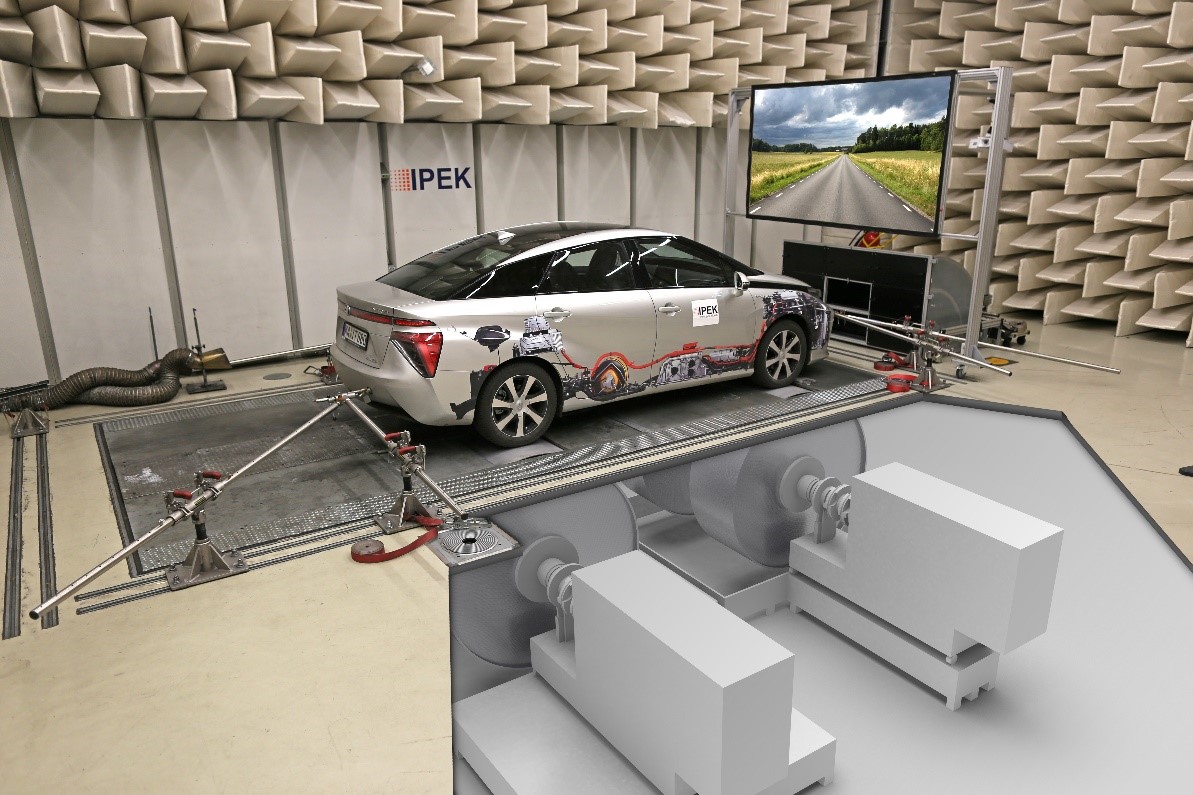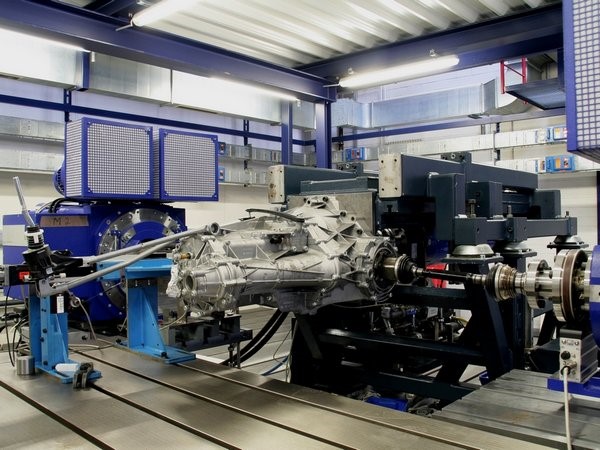Powertrain Systems
Introduction
Research focuses on powertrain systems and their components with regard to intrasystemic and intersystemic interactions. With the help of validation methods and procedures for the analysis and synthesis of complex systems, innovation processes and technology developments and their use are researched, accompanied and supported. The realisation of technology demonstrators up to prototype scale is part of the research understanding.


The sustainable provision and conversion of powertrain energy in mobile systems is one of the central challenges of future mobility systems. The topic "Powertrain Systems" focuses on design methods, design processes and technologies that are required to enable new, economically and ecologically sustainable solutions for the mobility of tomorrow. The research focuses on powertrain systems and their components, whereby the powertrain system is understood as a complex subsystem that interacts with the entire vehicle. Based on fundamental, practical investigations of technology demonstrators and processes, new, energy-efficient powertrain systems are developed up to prototype scale. The analysis of intrasystemic interactions, such as between the combustion or electric engine and the transmission including vibration isolation, as well as intersystemic interactions, such as between powertrain systems and chassis, is the prerequisite for the development of new customer- and market-oriented powertrain systems or the optimization of existing systems. Supported by many years of experience with conventional powertrain systems, research in this context now concentrates on concepts and components for hybrid or electric powertrain systems, also using hydrogen fuel cells.
Research Focus

Concepts and components for energetically and thermally optimized drive systems
The overriding research goal of new concepts and components for powertrain systems, is to achieve both optimization of the subsystems themselves and optimization of the entire powertrain system. This is only possible in a target-oriented and efficient manner through early or simultaneous consideration of the topologies and operating strategies for the powertrain systems. Thus, in addition to existing technologies, the focus is not only on the high-revving concepts, but also on concepts with hydrogen-based fuel cells and internal combustion engines with regenerative or synthetic fuels.
Topologies for powertrain systems
Work on the topics of energy storage, energy distribution, new transmission concepts, electric machines, systemic or conceptual lightweight construction for powertrain systems and tribological issues are aimed at solving power transmission problems.
Operating strategies for powertrain systems
The consideration of driving strategies, including operating strategies, driving dynamics and condition monitoring, aims to increase customer benefits through optimized energy consumption and safety.
Dynamic powertrain system interactions - transmission path from energy storage to (customer) assessment.
By means of NVH analysis, NVH design and NVH assessment, the topic deals with solutions and measures to avoid unwanted vibrations, oscillations and noise, taking into account the interactions between the powertrain system and the entire vehicle. Suitable methods for vibration cancellation and isolation are applied or solutions are developed according to need.
Agile and holistic methods and processes for integrated development and validation.
Research is aimed at validation methods and processes for the analysis and synthesis of complex systems, taking into account interactions with the driver and the environment. Highly specialized test equipment, measurement methods, simulation environments and models are used, most of which are developed and implemented in-house according to requirements.
Associated Institutes
EBI-vbt - Engler-Bunte-Institute Combustion Technology
ETI-HEV - Institute of Electrical Engineering - Chair of Hybrid Electric Vehicles
IAM-ESS - Institute for Applied Materials – Energy Storage Systems
IAM-ET - Institute for Applied Materials - Electrochemical Technologies (IAM-ET)
IFKM - Institute for piston machines
IPE - Institute for Data Processing and Electronics
IPEK - Institute of Product Engineering
ITM - Institute of Engineering Mechanics
